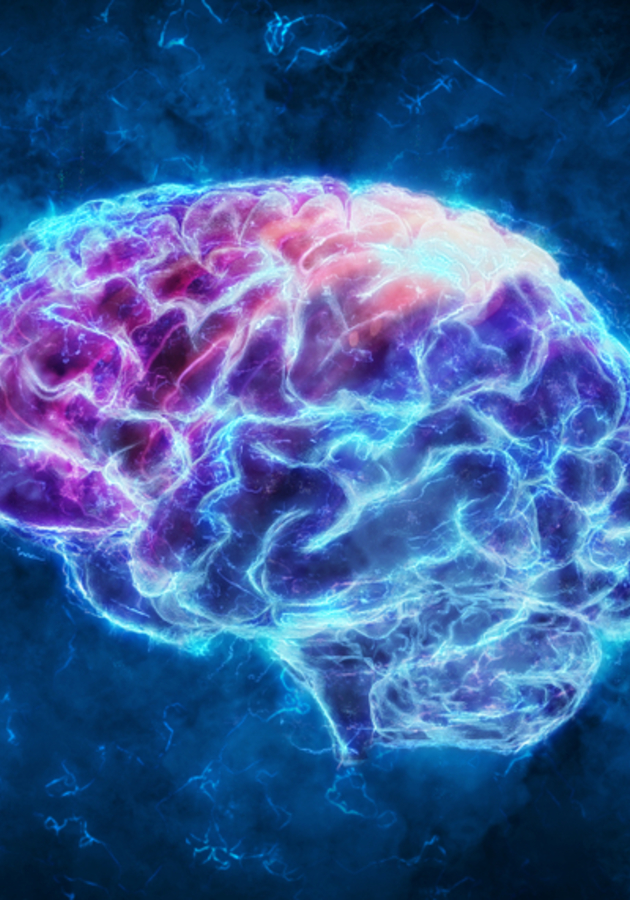Forget about what fairytales and Hollywood tell you – no matter how much love two people feel for each other, it may sometimes be impossible for them to find a way to be together and work out their differences. In “Attached,” psychiatrist and neuroscientist Amir Levine and organizational psychologist Rachel Heller explain why. Get ready to discover yourself!
The evolutionary basis of attachment theory
First proposed by British psychologist John Bowlby in the 1970s, attachment theory is a psychological and evolutionary model of human behavior based on the idea that the need to be in a close relationship is engraved in our genes. This might seem a bit conservative in our age of radical individualism, but it makes a lot of evolutionary sense. To begin with, ask yourself the following question: “If my first neighbors were lions and tigers, would I choose to rely on myself for protection or form a close bond with someone else?”
The prehistoric world was no place for loners: people who refused (for whatever reason) to become dependent on other people were far more likely to end up being prey. For hundreds of thousands of years of our evolution, being attached to someone was a survival advantage. In other words, quite counterintuitively, genetic selection favored the more vulnerable among our ancestors – that is to say, the ones who allowed others to take care of them.
Now, obviously, we are not hunted by predators anymore. Even so, we tend to act as if we still are. This should surprise nobody since, in evolutionary terms, we reached the top of the food chain no more than a second ago. “Our emotional brain was handed down to us by Homo sapiens who lived in a completely different era, and it is their lifestyle and the dangers they encountered that our emotions were designed to address,” Levine and Heller write. “Our feelings and behaviors in relationships today are not very different from those of our early ancestors.”
Case in point, our brain still has a biological mechanism “specifically responsible for creating and regulating our connection with our attachment figures (parents, children, and romantic partners).” It is called the attachment system, and it consists of “emotions and behaviors that ensure that we remain safe and protected by staying close to our loved ones.”
When separated from their mothers, children immediately start protesting. They become panicky and rowdy, refusing to calm down until reestablishing contact. “In prehistoric times, being close to a partner was a matter of life and death,” Levine and Heller remark. “And our attachment system developed to treat such proximity as an absolute necessity.”
The dependency paradox
It gets even more interesting. Namely, since the attachment system remains to be a part of the adult brain as well, grown-ups exhibit the same so-called protest behavior as children. It’s just a bit more subtle. Just think of the last time someone of your loved ones didn’t arrive home on time. Remember the sinking feeling in your stomach and the accompanying hysteria? Well, that’s the attachment system taking the reins over your body. And all those numerous calls on your loved one’s phone in the middle of the night? Nothing more but a grown-up version of a child’s uncontrollable crying, a more focused and directed attempt at reestablishing contact with someone you care about.
If you’ve ever been in a situation such as this, you probably already know that you won’t feel calm nor at ease before your loved one picks up the phone – or, even better, returns home. It’s nothing less than fascinating that the normal functioning of your body and your brain could depend on someone else’s presence and well-being. And yet – it constantly does. That’s one of the mesmerizing side effects of being evolutionary programmed to single out specific individuals and make them precious to you. In time, they become part of you. Quite literally.
“Numerous studies show that once we become attached to someone, the two of us form one physiological unit,” the authors explain. “Our partner regulates our blood pressure, our heart rate, our breathing, and the levels of hormones in our blood. We are no longer separate entities. The emphasis on differentiation that is held by most of today’s popular psychology approaches to adult relationships does not hold water from a biological perspective. Dependency is a fact; it is not a choice or a preference.”
The most famous of these studies is Mary Ainsworth’s strange situation test, in which a mother brings a 1-year-old child into a room full of toys and then leaves, after which a stranger comes in and attempts to engage the child. The stressful situation is repeated several times over, with the mother constantly going away and returning to reunite with her child. What the experiment discovered is that a child’s exploratory drive depends almost entirely on the presence of their mother; in her absence, even when they are not crying, most children seem disinterested in finding out more about their environment or playing with the available toys. Without “a secure base” to return to in case things go awry, they lose the courage to delve into the unknown. Adults are no different.
The three attachment styles
Only when our emotional needs are met, we can safely turn our attention outward. So, quite paradoxically, the more effectively we depend on someone else, the more independent and daring we become.
However, even though we all have this basic need to form close bonds with other people, the way we form them varies from one person to another. Some create too strong bonds with other people, others too loose. Yet a third group of people are dependent on others in just the right kind of way. Consequently, attachment theory designates three main “attachment styles” for adults – or “manners in which people perceive and respond to intimacy in romantic relationships” – that parallel those found in children: anxious, avoidant, and secure.
- Anxious. Anxious people have the capacity for great intimacy and enjoy being very close to their romantic partners. However, they live with a sixth sense for danger, constantly fearing that they are the ones who love more and that they will one day be abandoned and left alone. Consequently, relationships consume a large part of their emotional energy: they are sensitive to small fluctuations in their partner’s moods and actions, tend to overreact to most of them, and often say things they regret just a while later.
- Secure. Secure people don’t fear being abandoned, so they find it relatively easy to get close to others. They are both comfortable depending on them and undaunted in making them dependent. Being warm and loving in a relationship comes naturally to those with a secure attachment style. They rarely get upset over relationship matters. Instead, they try to understand the needs and feelings of their partners and to learn how to respond better to different emotional cues. They are very reliable and are always around in times of need – even after a relationship ends.
- Avoidant. Avoidant people “equate intimacy with a loss of independence and constantly try to minimize closeness.” They prefer self-sufficiency to any kind of dependency, which is why they are rarely intimate with their partners. They neither enjoy opening up to them about their personal problems nor are good and empathic listeners. Instead, they tend to keep love at arm’s length even at the cost of becoming emotionally distant from people who care about them. Since they prize their freedom above anything else, they are not worried about being rejected and are often “on high alert for any signs of control or impingement” on their partners’ behalf over their territory.
Determining your partner’s attachment style
To form a healthy bond, anxious people need secure individuals, the only ones who can provide them the three things they need – safety, reassurance, and understanding. On the other hand, if one of the partners in a bond is anxious and the other avoidant, then “their relationship is likely to become more of a storm-tossed voyage than a safe haven.” Consequently, it’s not enough to know your own attachment style – it’s even more important to determine the attachment style of your partner. To this end, Levine and Heller provide the five golden rules for deciphering attachment styles:
- Determine whether they seek intimacy and closeness. No question is more important than this one. If the answer is no – then your partner or date probably has an avoidant attachment style; if it is yes – then they have either a secure or anxious style.
- Assess how preoccupied they are with the relationship and how sensitive they are to rejection. To distinguish between those with a secure and those with an anxious attachment style, try determining if your intimacy-seeking partner gets easily hurt by the things you say and if they are worried about your future together. If the answer to these questions is yes, then it is likely they have an anxious attachment style.
- Don’t rely on one “symptom,” look for various signs. Let go of preconceptions and don’t rush into conclusions. People are complex beings, so sometimes there’s more than meets the eye. For example, arrogance may be a symptom of an avoidant type, but it also may be a mask hiding someone in need of closeness and deep intimacy. So, in determining your partner’s attachment style, don’t just look at one attitude or belief; instead, focus on combinations of behaviors and attitudes that together create a coherent pattern.
- Assess their reaction to effective communication. Whether on a date or at a second anniversary, don’t censor yourself in front of your partner for fear of sounding needy, eager, or strange. Be honest with them. “Expressing your needs and true feelings can be a useful litmus test of the other person’s capacity to meet your needs,” Levine and Heller advise. “The response, in real time, is usually much more telling than anything he or she could ever reveal of their own accord.” When you’re honest and talk straightforwardly, secure people will understand you, anxious people will become more open, and the avoidant will start feeling uncomfortable.
- Listen and look for what they are not saying or doing. Finally, trust your gut feelings. Sometimes what your partner doesn’t say or do speaks louder than words and deeds.
Final Notes
Described as “a groundbreaking book that redefines what it means to be in a relationship,” by John Gray – the bestselling author of “Men Are from Mars, Women Are from Venus” – “Attached” is, indeed, quite an enlightening read.
Although it tends to simplify things here and there – and although sometimes it feels as if it’s too long to endure the burden of its one big idea without being redundant – it’s still simultaneously science-based and applicable. And – especially in the “Sex & Relationships” genre – very few bestselling books can be described in this way.
12min Tip
Anxious people are preoccupied with their partner’s feelings; avoidant, in contrast, are too disinterested in them. If you are not a secure person – that is, warm, loving, and comfortable with intimacy – then try to find one: relationships between anxious and avoidant people are emotionally taxing roller coasters for both sides.





























